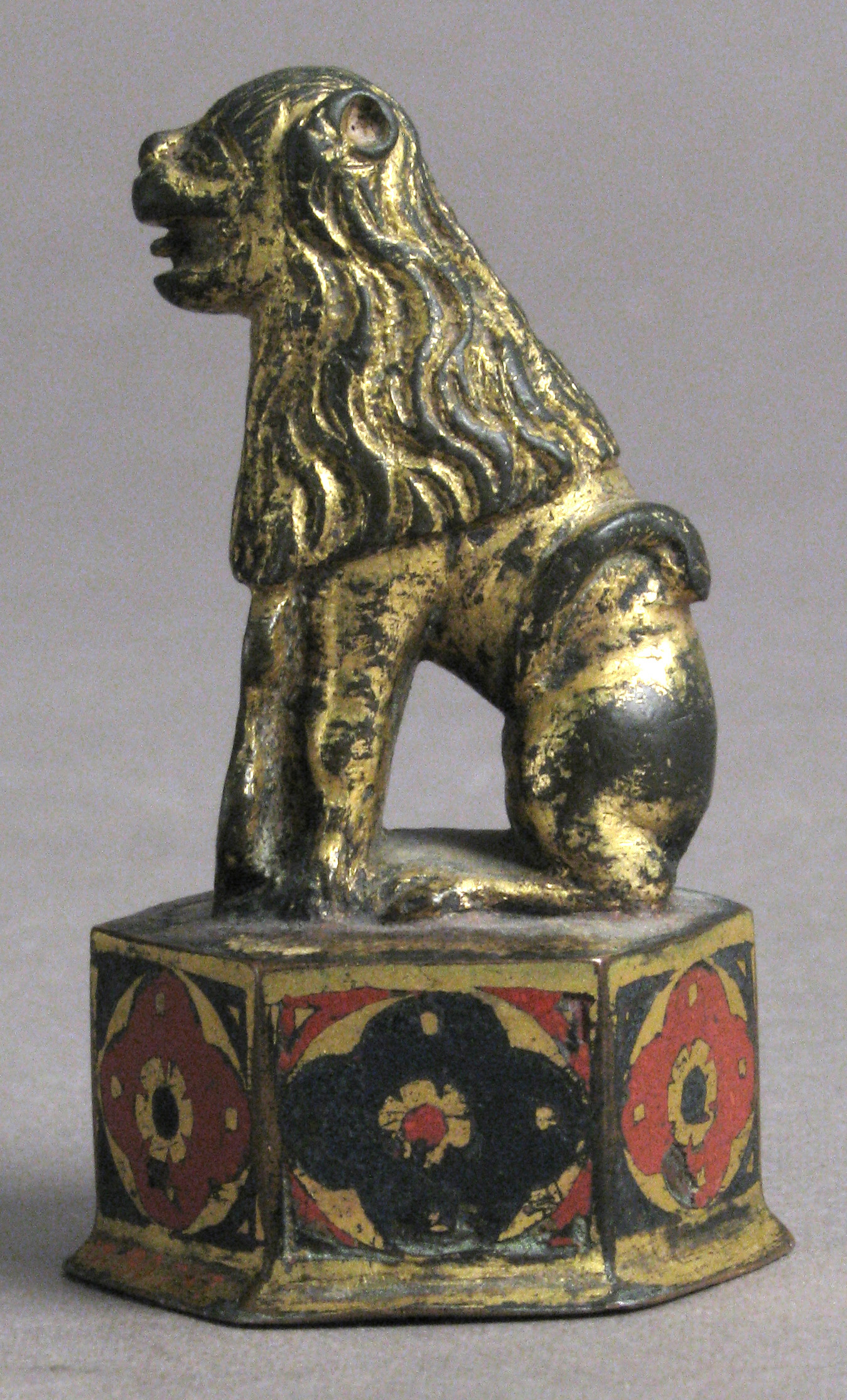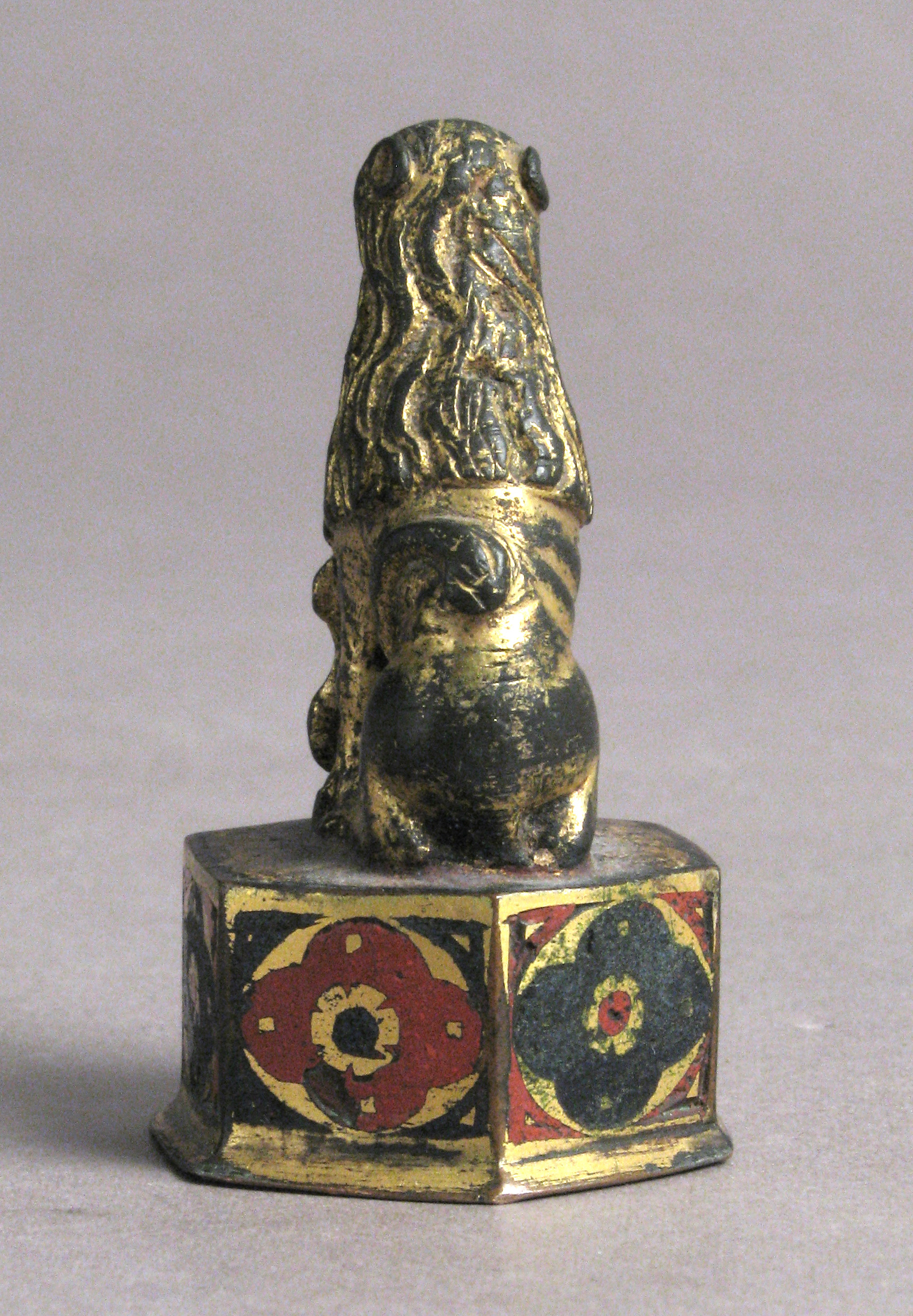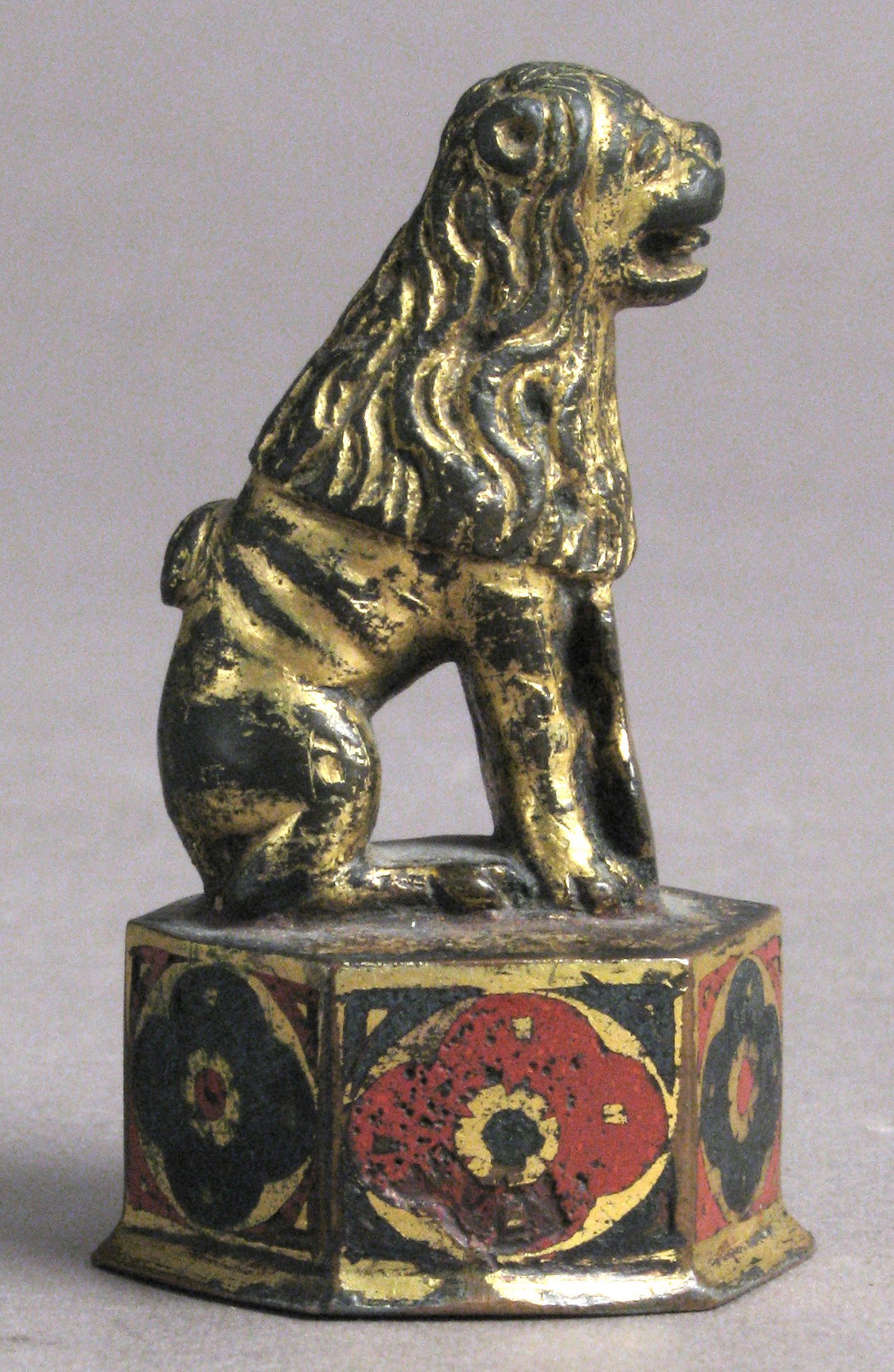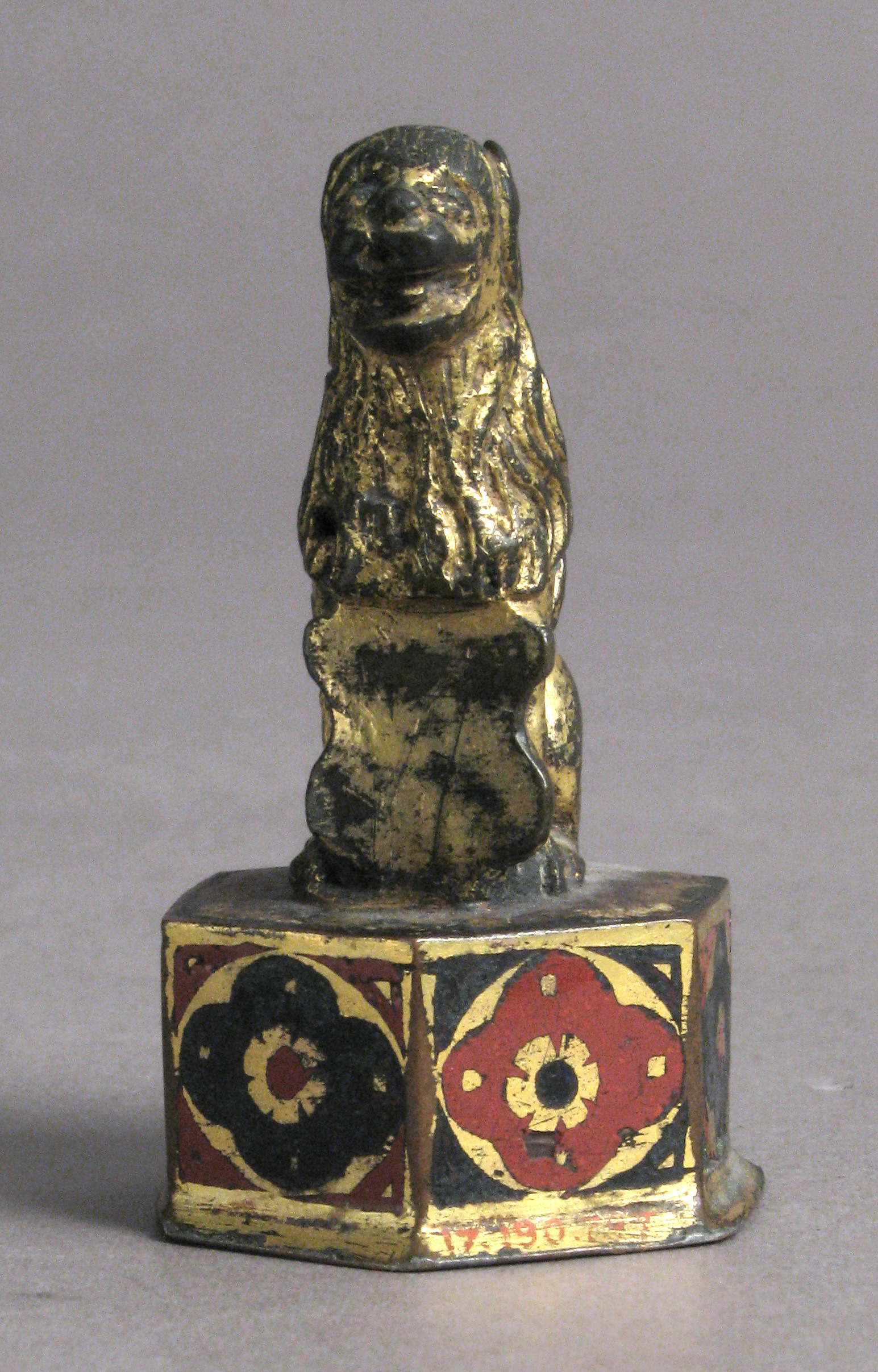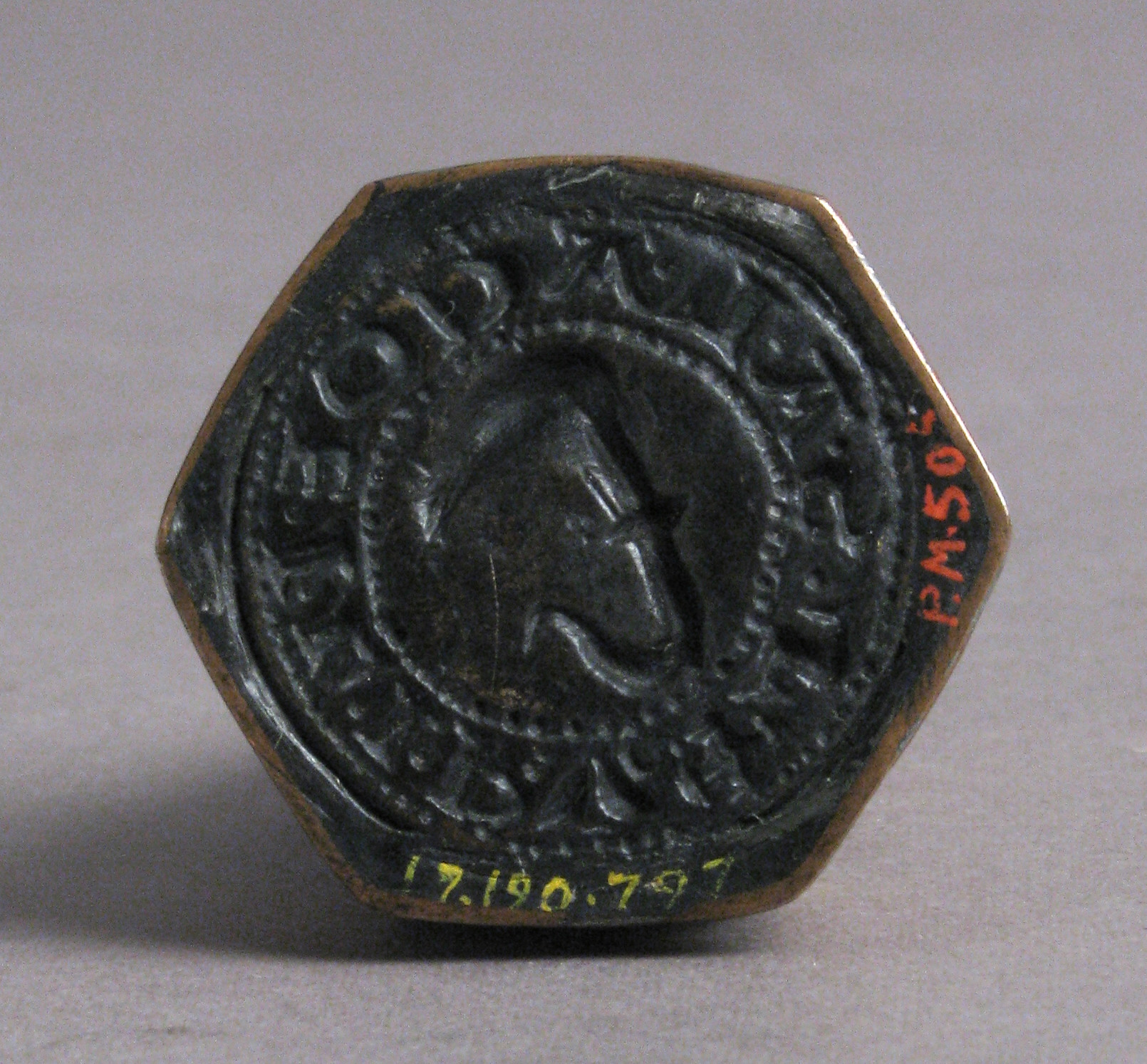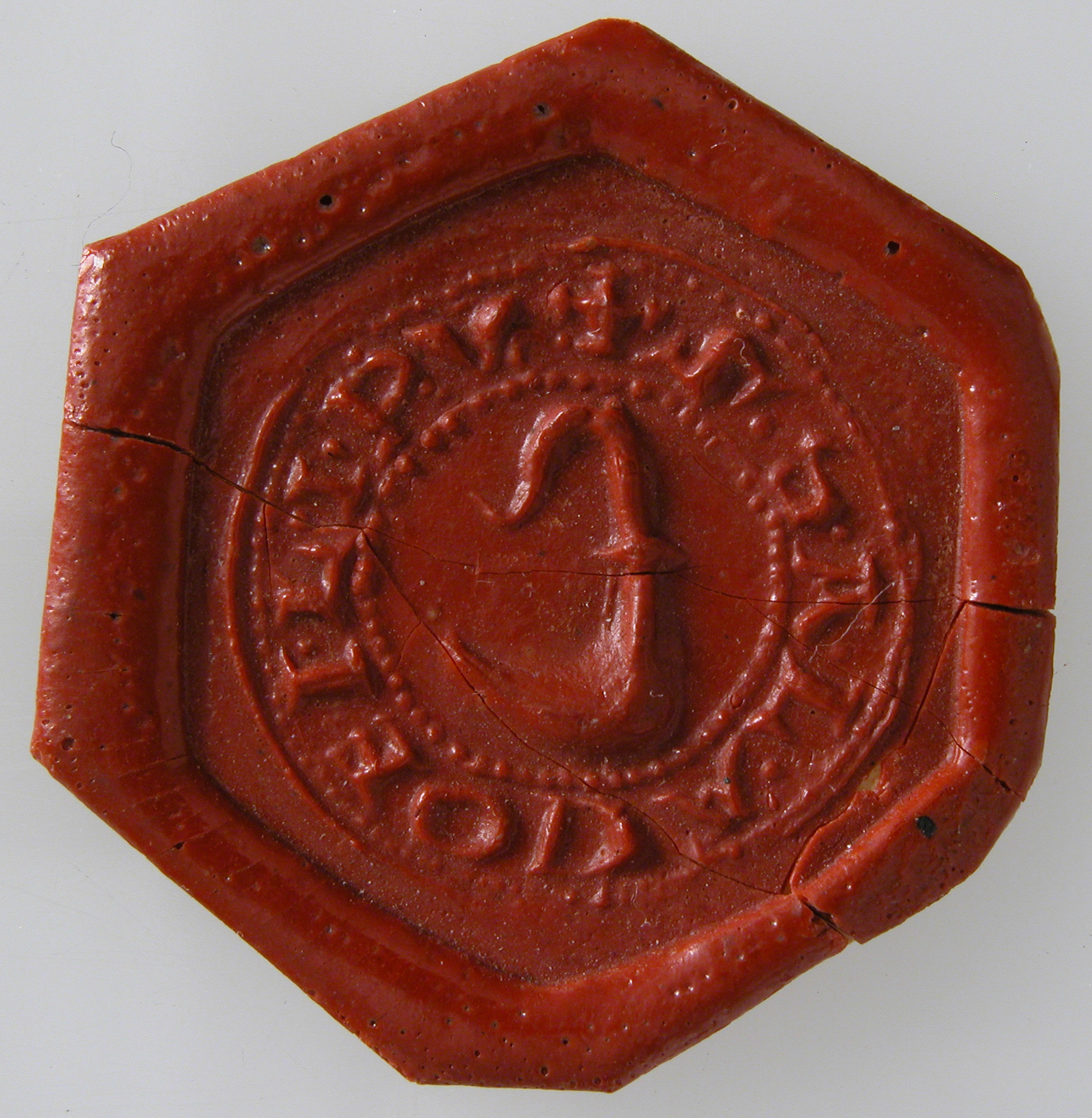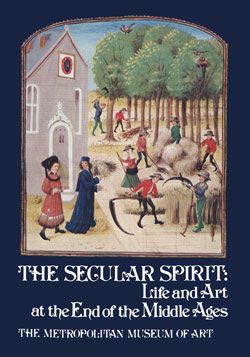Seal
There were in the Middle Ages a large variety of seals ranging in importance from the great seal of the king, which might be as large as five inches in diameter, down to the vast numbers of smaller seals which belonged to more ordinary individuals. There were also corporate seals belonging to guilds, cities, cathedrals, monasteries, or universities. The materials from which seals were made vary in relation to the wealth of the owner. Silver and brass were most frequently used, but gold, and, among the less costly materials, lead, stone, and even mood were employed. Seals varied in quality of workmanship from the most elaborate to the rough-cut merchant marks or the simple initials of yeomen.
Since almost all legal and business transactions were executed by a seal, it was a closely guarded object. There are records of a king’s councilor who lost his silver seal and the chain which attached it to his belt, and a French nobleman whose seal was stolen by the English, both of whom requested that their seals be revoked so they could not be used illegally.
In the center of the seal was usually a device, and around the border a lettered legend which might specify the authority of the seal, or give an instruction to the recipient of the letter or document to which the impression of the seal was affixed. Sometimes the inscription was a personal device and even love mottos appear. This seal was most probably a private one, but neither the device in the center nor the inscription has been deciphered.
Due to rights restrictions, this image cannot be enlarged, viewed at full screen, or downloaded.
This artwork is meant to be viewed from right to left. Scroll left to view more.


